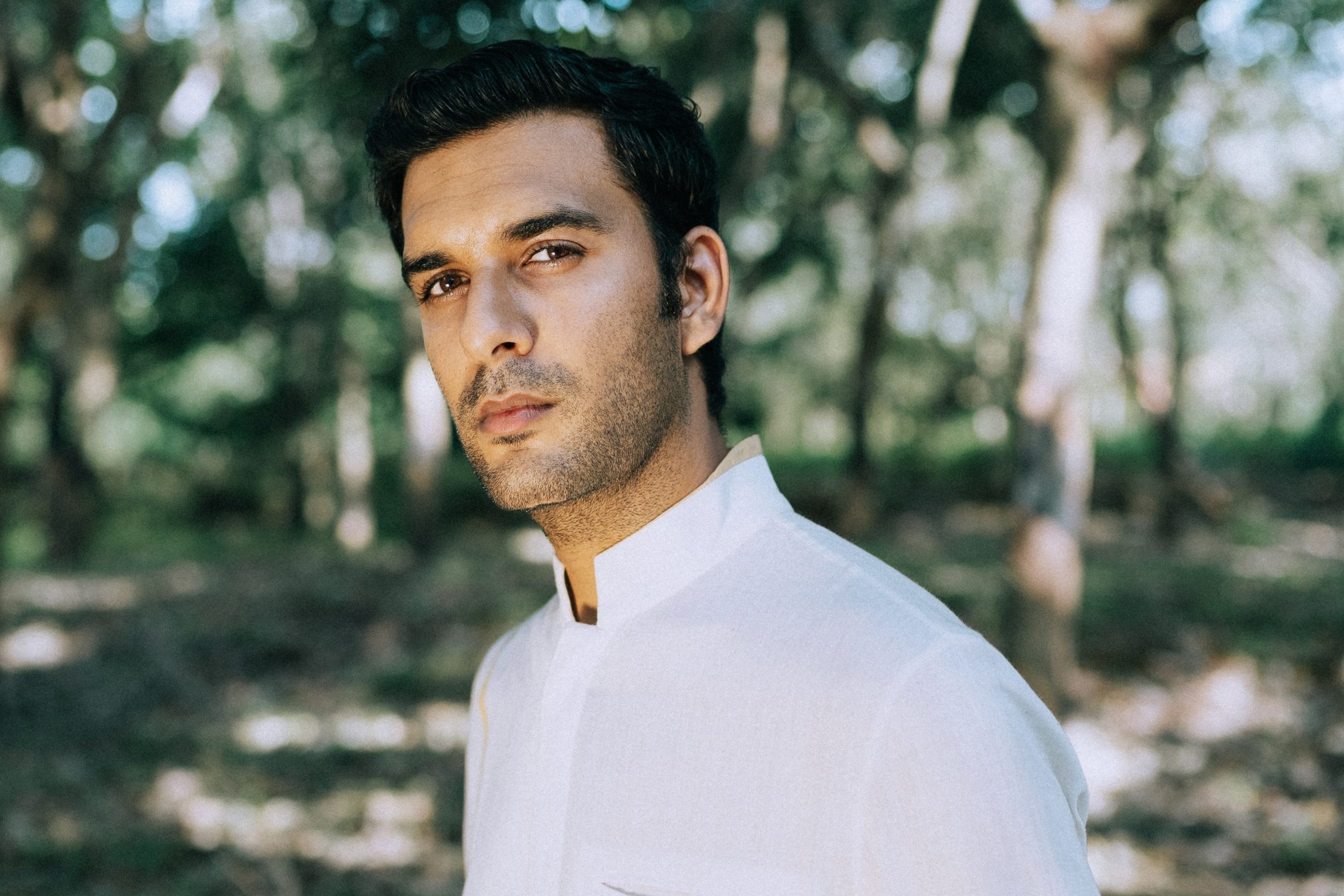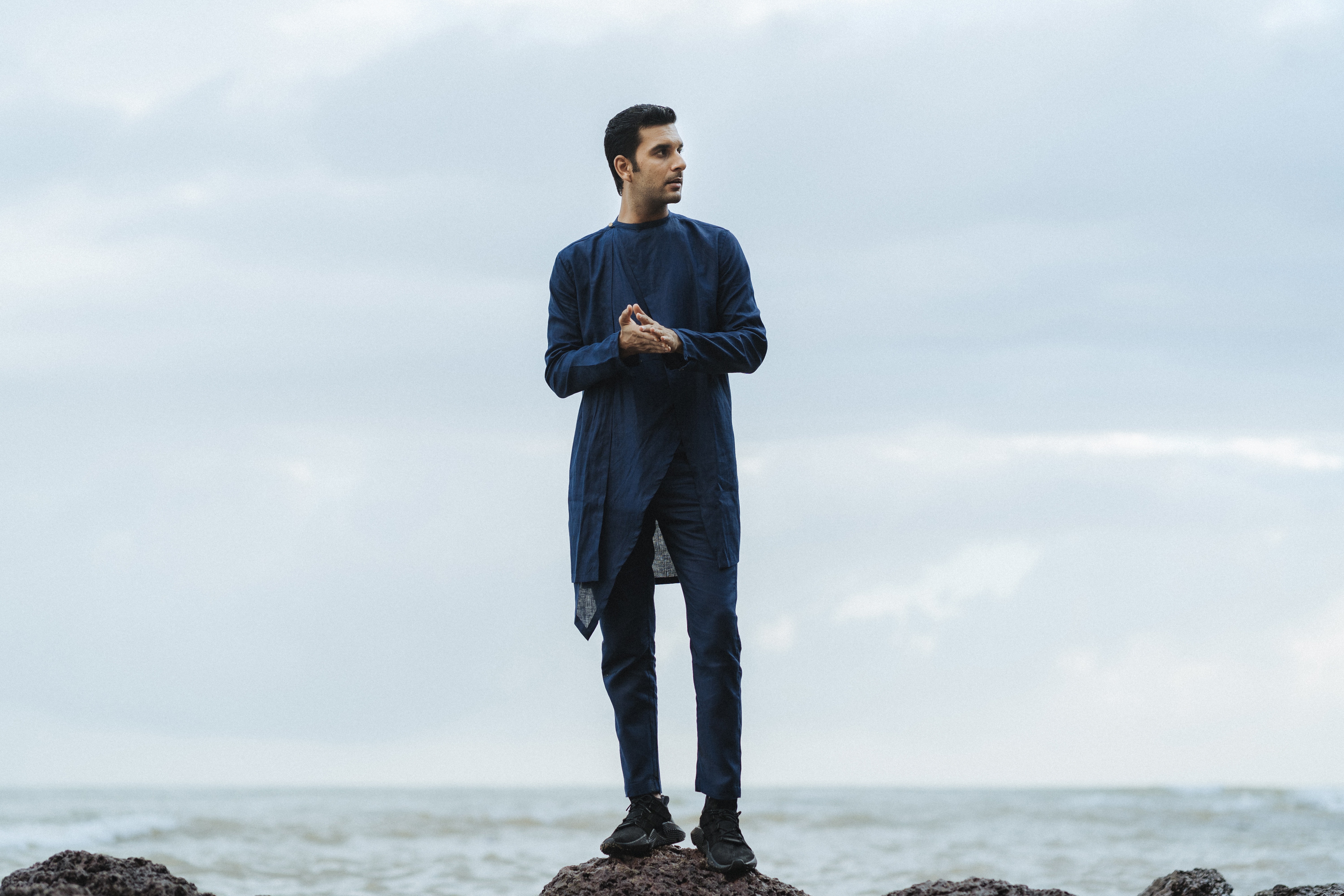 Features
Features
Anyasa is bringing Indian traditional music and electronic sounds to the world
Taking Anjuna back to it's Goan roots
Anjunabeats is the globe-spanning record label set up by trance veterans Above & Beyond. Anjunadeep is the more eclectic, experimental offshoot, home to a range of underground favourites including Ben Böhmer, Luttrell and Yotto.
What you may not be aware of is that Anjuna is also a beach town in North Goa, India – famous, among other things, for legendary parties dating back to the 1960s. Perhaps most famous (or indeed infamous) of these were the classic psychedelic or Goa trance parties of the 90s and 00s from which Above & Beyond took inspiration for the name. Yet amazingly, neither Anjuna imprint has ever released a record from an Indian artist, not to mention a Goan. Until now…
Read this next: Dancefloors in India are bringing people together with an explosive energy
Anyasa – which means “spontaneous or effortless” in Sanskrit – is the brainchild of Goa native Anish Sood. Anish found success early in his career, riding the Indian dance music explosion, headlining mega festivals like Sunburn and supporting the numerous superstar DJs that visited the subcontinent.
Since then, the Indian dance music scene has matured considerably and Anyasa also marks a change in Sood’s musical philosophy. Tapping into India’s rich traditional and classical music history, the project aims to combine classical Indian singers and instrumentalists with a contemporary electronic sheen.
“I started writing the EP during the first lockdown in April 2020,” says Anish from his home in Goa’s state capital Panjim, around 15 miles from the iconic, titular beach town. “I had never worked with Indian vocals and I would typically spend the summer in LA collaborating with songwriters on new music. With travel shut down, exploring Indian sounds seemed like the natural recourse.

“The idea was to create an authentic sound. A sound that embraced my Indian roots and brought classical vocals to the global electronic music stage. Through a combination of previous connections and fresh discoveries on Instagram, I narrowed down four amazing singers and songwriters - Isheeta Chakravarthy, Bawari Basanti, Avneet Khurmi and Amira Gill. I also tried to capture that progressive essence, that was my gateway to electronic music back in the early 00s.”
Isheeta Chakrvarty’s voice has graced title soundtracks for a number of Bollywood blockbusters. She trained in Hindustani Classical music before collaborating with Indian jazz icons like Carlton Kitto and Louis Banks. Bawari Basanti started to learn classical music aged nine when her grandmother would teach classes in their family home. She later studied Hindustani Music and attended Swarnabhoomi Academy of Music to learn performing arts.
Read this next: Daytimers announce second compilation supporting COVID relief efforts in India
Amira Gill is a vocalist and songwriter from New Delhi, India. She attended the world renowned Berklee College of Music. She writes original music in English, Hindi and Punjabi, with a rich vocal style that covers soul and R&B as well as Indian Folk music.
Avneet Khurmi was brought up in Chandigarh, India but is based in Amsterdam and has had several big Indian hits in the Punjabi folk style and collaborated with the huge Indian producers like Nucleya and Lost Stories.
With a history reaching back over 6000 years, Indian classical is one of the earliest formal music systems and one of the richest. Yet while it is an obvious resource, still a relatively small number of homegrown Indian artists have managed to authentically fuse modern house or techno with this rich mine of traditional sounds.
While we are discussing history, it’s hard to underestimate the importance of Goa’s place in Indian and global dance music.
In the late 80s or early 90s many British and Northern European DJs and ravers had a stark choice when wanting to escape the dreariness: Goa or Ibiza. Some went for both, doing summer seasons in Ibiza and then heading to the tropics for winter – despite stories that it sometimes got so hot it would melt your records. In Goa they would find parties and raves of unreal proportions, often lasting as long as a week with people from all over the world dancing on beaches and deep in the jungle. Sven Väth spent a lot of time there partying and playing. The place even has a genre named after it: Goa Trance.
“Since the sixties when the first hippies landed here from San Francisco, Goa has always been on the legendary hippie trail,” explains Anish.
“Unlike the rest of India, Goa was also a Portuguese colony with a predominantly Catholic population. Even after liberation in 1961, the essence of Goa was still very Western, liberal and hospitable. This really made it a melting pot of culture – and of course it doesn’t hurt that we have some of the most stunning beaches in the world.
This set the stage for a thriving music culture with everything from psychedelic rock all the way to Goa trance. While the psytrance scene is still very big, house and techno have now also become hugely popular – as is the case across India.”
Read this next: Goa bans late-night dance parties in India's rave destination
Listening to the Gaya EP is joyous. The Anjuna dancefloor energy is there, with the progressive element of the early 00s mentioned earlier. There are touches of classic deep Chicago house and even some of that very early Goa trance sound – before it became Psy and BPMs went off the charts. Then the ethereal vocals of each guest add an extra dimension, along with the subtle addition of traditional Indian instruments and percussion in places to create a dreamy, cross-cultural melange.
Anyasa is, of course, not the first artist to fuse Indian vocals with traditional Indian vocals and players. But he has achieved something truly authentic that will move dancefloors and hearts in equal measure. And, with plans for a touring live show – we hope – he will bring this beautiful and revered style of music to a whole new global audience.
12 Indian acts pushing traditional sounds in electronic music
Murthovic
An Indian electronic music composer, sound designer and pioneering DJ with a 20-year pedigree. Trained in Western Classical and Indian Carnatic music, he recently collaborated with visual arts director Avinash Kumar and veteran Bharatanatyam (a form of Indian classical dance) performer Jayalakshmi Eshwar for the stunning ‘Antariksha Sanchar’ project. It is a work of epic proportions, described as an album/video game/space opera based on the theorems of Indian mathematician Srinivasa Ramanujan, who was portrayed by Dev Patel in the film "The Man Who Knew Infinity".
Modular Princess
Arushi Jain – as her stage name suggests – a vast array of modular synths and her ethereal voice to create music in Ragas – which is an Indian classical style is a melodic framework for improvisation and composition. Also performing under the moniker OSE, Arushi studied at Pryag Hindustani Music School and The Ravi Shankar Institute in New Delhi. She also took Computer Science at Stanford University, California and divides time mainly between India and the USA – gigging along the way.
Anhad & Tanner
A collaborative project, hailing from New Delhi and Durham/North Carolina respectively, based in the US, focusing on contemporary Indian electronica fusion sound. Anhad brings the sound of the Asian underground and Indian electronica, while Tanner offers influences rooted in contemporary jazz and western classical, making for a rare choice of sonic amalgamations.
Lifafa
Lifafa – otherwise known as Suryakant Sawhney – is an eclectic composer and performer who, among other creative outputs, has spent much time exploring the traditional music of India. He has created a contemporary electronic sound fused with Hindi and Urdu vocals and grown an audience in India and beyond, playing many shows in Europe and the USA.
Karsh Kale
Born in the UK of Indian descent and spending his formative years in the USA, Karsh now also resides in Goa. Along with other British Indian composers like Talvin Singh and Nitin Sahney, he is considered one of the legendary forefathers of Classical Indian/electronic fusion. After pushing this sound for over two decades Karsh continues to grow his audience with a new generation of young Indian music fans with fresh music and contributions to the new wave of Desi cinema on films like "Gully Boy" – inspired the lives of Mumbai street rappers Divine and Neezy.
Hari + Sukhmani
Are an Indian folktronic duo comprising Hari Singh Jaaj and Sukhmani Malik. They fuse traditional Punjabi fold music with electronic soundscapes and elements of Sufi poetry to create a magical mix. Sukhami is a trained Hindustani classical vocalist while Haris Singh is a producer, vocalist and audio engineer.
Tech Panda & Kenzani
Tech Panda (Rupinder Nanda) & Kenzani (Kedar Santwani) – both individual artists in their own right hailing from New Delhi. They come together to form this duo, incorporating classical Indian instruments and vocals into the disco and funk tinged electronica.
Todh Teri
Todh Teri reworks classic Indian cinematic sounds for the modern dancefloor – reimagining the era of disco & cabaret from Bollywood with house, acid and funk infusions. The edits preserve the original flavors of these beloved classics, while making them current and keeping an influential piece of musical history alive. His ‘Deep in India’ Volumes dish out a collection of feel good grooves that will linger long after you’ve left the nightclub. Todh also curated the celebrated “India Gets Physical” compilation.
RINI
Leading an international collective of musicians, New York-based, Chennai born singer, composer and violinist Harini “Rini” Raghavan creates her own version of Indian electronica. Harini draws from her formal training in Carnatic music and works at Berklee College of Music in Electronic Production to bring together sounds and music of her birthplace in India and her new home in the US.
Midival Punditz
Veterans of the classical Indian / electronica fusion sound, Gaurav Raina and Tapan Raj are renowned as pioneers of this fusion approach utilizing many traditional instruments including the dhol, tumbi, tabla, sitar, swarmandal and collaborating with a host of Indian language vocal stars. Making music since the early 2000s, they have seen major success in India and around the world.
Kiss Nuka
An acclaimed audiovisual artist-producer, performer and vocalist, part of Kiss Nuka’s eclectic output focusses on her love for her Indian roots. Her song “Kashmir” with Kashmiri singer Khalid Ahamad and award-winning rabab player Sufiyan Malik is a stunning piece, evocating her love letter to the valley after she made her first visit. She also recently released the Mahamrityunjay Mantra, an age-old mantra of healing during the pandemic. The album also comes with audiobooks in Hindi and English available on Dolby Atmos.
Troja
Born in New Delhi and raised in Calcutta. Troya was classically trained in the violin from an early age and eventually graduated from the Royal School of Music, London – followed by a stint at Saint Andrew's University in Scotland. Troja's foray into electronic music as a producer was primarily inspired by the desire to combine a range of house and techno he'd been exposed to and fell in love within the UK and Germany, with more organic and classical sounds from back home; bringing together the east and the west under one soundscape that he could call his own.
Nick DeCosemo is Mixmag's Global Editorial Director, follow him on Instagram


